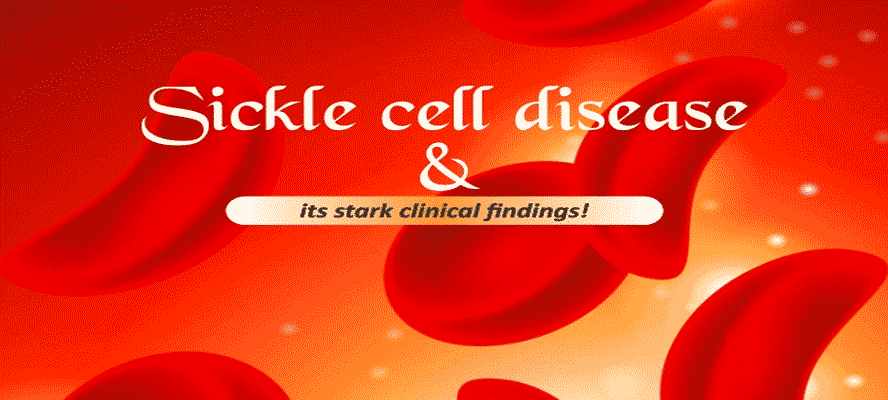Primeval life posed many questions, questions about Origin of Life and about the Primitive atmosphere. Oxygen is well-known as a component of water. It was then discovered that oxygen is also one of the constituents of the atmosphere as well. Amidst all these studies, one thing is sure that this colorless, tasteless and odorless gaseous chemical element called Oxygen plays a vital role in almost all aspects in and around living beings, including breathing and also in metabolism. As research developed, the extensive presence and importance of oxygen was understood when Hunefeld discovered the oxygen- carrying protein hemoglobin in 1840.
Constituting around one-fifth of the atmosphere, oxygen is indispensable. In the human body, oxygen is transported from lungs to different organs by a protein called hemoglobin found in the red blood cells. Blood hemoglobin has a high affinity for oxygen. Most of the time, transport is smooth but sometimes due to few abnormalities in hemoglobin, this transport goes awry resulting in bumpy and sluggish ride for red blood cells. Due to such abnormalities, the oxygen carrying capacity of hemoglobin diminishes, causing the shape of the normally round shaped red blood cells to become sickle-like (or crescent). This condition is called as Sickle Cell Disorder (SCD).
Sickle Cell Disorder describes a group of inherited red blood cell disorders. Individuals with Sickle Cell Disorder have abnormal hemoglobin (instead of normal hemoglobin A), called sickle hemoglobin or hemoglobin S, in their red blood cells.
‘ Epidemiology
In India, though first described in the year 1952) in the tribal populations of Nilgiri Hills in Tamil Nadu,
comprehensive research on this disease is largely undocumented. On the global scale, India has the
highest concentration of tribal populations wherein the states of Karnataka, Odisha, Andhra Pradesh,
Rajasthan, Maharashtra, Chhattisgarh and Jharkhand contribute to more than 80% of the total scheduled
tribe population of the country, Scientific studies reveal that Sickle Cell Disorder has a higher rate of prevalence in the
central and western regions of India.’ Age-old and long established social practices of consanguineous
marriage (between blood relatives) and community endogamy are two of the most common factors that
lead to increased homozygosity of Sickle Cell Disorder (a recessively inherited genetic disorder).
Sickle Cell Disorder-A Genetic Defect
Sickle Cell Disorder is one among the most common monogenic disorders. It is caused by a single nucleotide change
(point mutation) in the amino acid of the Beta subunit of hemoglobin (Hb) protein. Beta subunit of Hb
is a single chain of 147 amino acids, and in Sickle Cell Disorder, this beta globin whose gene is located on chromosome
11 is mutated. The most common mutation arises from the amino acid change in the 6″ position from
glutamic acid to valine, which ultimately leads to production of abnormal hemoglobin. Some mutations
show slightly different substitution mutations in their beta globin gene that produces hemoglobin C,
hemoglobin O and hemoglobin S. Therefore in this condition, heme of hemoglobin is associated with
two normal alpha globin and two abnormal beta globin chains. Very rare cases have a different mutation
in each copy of their HBB gene: one that causes RBCs to form sickle shaped and second which is associated
with beta thalassemia. Therefore, these rare mutations are called sickle beta thalassemia mutations.
It is very important to understand the difference between (SCD) and sickle cell trait (SCT). Sickle cell trait means a person carries a single copy of the mutated gene and a single copy of normal gene. Thus, this person with SCT shows mild symptoms or is asymptomatic but is only a carrier of SCD.
‘ Pathophysiology
RBCs are normally small, round and biconcave in shape. A person suffering from Sickle Cell Disorder has red blood
cells that are crescent (or sickle) shaped. This sickle shape of the abnormal RBCs hinders the smooth
movement of cells through the blood vessels. This hindrance by sickle cells lead to clogging of the
blood vessels, thereby causing painful episodes called as sickle cell crisis. Low oxygen damages the
cell membrane, decreasing the cell’s elasticity. The rigid blood cells are unable to deform as they pass
through narrow capillaries, leading to vessel occlusion and ischemia. Hemolysis, the destruction of the
red cells inside the spleen is the actual cause of anemia known as hemolytic anemia.
Types of sickle cell disorders
There are several types of sickle cell disorders, out of which the most prevalent in global population are
the sickle cell anemia, sickle beta-plus thalassemia, sickle hemoglobin-C disease, sickle hemoglobin-D
disease, and sickle hemoglobin-O disease.
- Sickle Cell Anemia Sickle cell anemia (SCA) is the most common inherited hemoglobinopathy in the World. It is an autosomal recessive genetic disorder and results when a child inherits one copy of the sickle cell gene from each parent
- Sickle Beta-Plus Thalassemia Individuals suffering from Sickle Beta Thalassemia (SB) disease also contain substitution mutation in both beta globin genes. Severe cases of sickle beta thalassemia disease require frequent blood transfusions.
- Sickle Hemoglobin-C Disorder Individuals affected by sickle hemoglobin Calso called SC disease have both hemoglobin S and hemoglobin C. They lack normal or adult hemoglobin. Being an autosomal recessive genetic disorder, the disease is inherited by the child when sickle cell -hemoglobin S gene is passed on from one parent and a hemoglobin C gene from the other parent. SC red blood cells are not flexible enough to move through the blood vessels, they sickle and rupture, having a shorter life span than normal red blood cells. From the remains of the cells that are ruptured, bilirubin is produced which can increase the risk of causing jaundice.
- Sickle Hemoglobin-D Disorder It is a variant of sickle cell disease with HBB gene point mutation in the first base of 121 codon. The point mutation is characterized by substitution of glutamine for glutamic acid in the beta globin chain. The condition is a hemoglobin variant which is most prevalent in Punjab region, Northwestern Indians, thus also known as hemoglobin D-Punjab.
‘ Signs and symptoms
Sickle Cell Disorder is characterized by vaso-occlusive events causing tissue ischemia which include acute to chronic
painful complications such as dactylitis (pain or swelling of hand or feet), abdominal pain, jaundice, etc.
These complications affect other organs such as bone, spleen, liver, brain, Kidney, joints, lungs, etc. Most
vulnerable organ for infarction caused due to obstructed blood vessels is the spleen. Most of the individuals
with Sickle Cell Disorder become functionally asplenic in early childhood and have an increased risk of bacterial infections.
Abnormal breakdown of red blood cells may cause chronic conditions manifesting as anemia, jaundice,
delayed growth and sexual maturation, etc.
Other signs and symptoms of Sickle Cell Disorder include
- Shortness of breath and/or dizziness
- Headache
- Coldness in the hands and feet
- Pale skin due to anemia
- Jaundice or yellowing of eyes and skin.
‘ Diagnosis
Diagnosis of Sickle Cell Disorder most commonly involves a blood test which detects abnormal hemoglobin or defective
gene (hbb). Early diagnosis of Sickle Cell Disorder during prenatal and antenatal screening programs is essential.
Since it is an inherited genetic condition, it is important to remember that a complete family medical
history must be gathered before proceeding with the diagnosis.
Blood Test
- Sickle Cell Disorder is effectively diagnosed by a blood test, which involves hemoglobin electrophoresis that determines the presence of defective hemoglobin in blood of the patient. Hemoglobin electrophoresis is used as a primary screening test to identify variant and abnormal hemoglobins, including hemoglobin S (HbS).
- Isoelectric Focusing (IEF) and High Performance Liquid Chromatography (HPLC) are considered as gold standards for Sickle Cell Disorder diagnosis, differentiating between normal, SCT, and SCA samples.
- Newborn screening by heel prick method is an important programme for early diagnosis of Sickle Cell Disorder.
- Screening for Sickle Cell Disorder in pregnant women can also be carried out on prenatal specimens like amniotic fluid or chorionic villus cells.
- Mutation analysis (Beta6Glu-Val) by polymerase chain reaction (PCR) is one of the most sensitive methods in the diagnosis of Sickle Cell Disorder.
- Sickling Test This test determines the Sickle cell trait based on the characteristics of the red blood cells. It detects abnormal hemoglobins in the blood (hemoglobin S).
- HPLC Screening This technique is used to test driedblood specimens from newborn blood samples. It detects the presence of hemoglobin types i.e.F,A,S,C,E and D.
- Electrophoresis This is a confirmatory test which is used to measure the hemoglobins present in the blood and identify them.
- Liver Function Tests These test is conducted to detect hemolysis and measure the bilirubin levels in the serum blood. The risk of viral hepatitis titres in Sickle Cell Disorder as the levels of ferritin fluctuates in vaso-occlusive crisis.
- CBC for Anemia This test is essential for detecting Sickle Cell Disorder as it measures for hemoglobin and hematocrit. It also counts the RBCs and RBC indices (size and hemoglobin concentration). Individuals suffering from Sickle Cell Disorder have lower RBC, hematocrit and hemoglobin count.
‘ Genetic Counseling
The enormous burden of Sickle Cell Disorder along with correspondingly increased mortality and morbidity makes it
urgent to invest more in ways of reducing its prevalence. Genetic counseling for Sickle Cell Disorder educates both
normal and at-risk individuals about this autosomal, inherited disease. This important activity also
offers valuable guidance to those at higher risk of Sickle Cell Disorder and the opportunity of making informed decisions
on marriage and pregnancy, Developed countries have robust health programmes to follow universal
genetic counseling and screening for endemic inherited, disorders. The critical information obtained
from this valuable exercise gives both deeper insights into the epidemiology of such disorders, and
helps to provide a useful resource for health planning in these countries. Several scientific studies
have proved, that premarital genetic counseling have the potential to significantly reduce the prevalence
of Sickle Cell Disorder. Most importantly, premarital genetic counseling offers significant advantage over neonatal
screening. In India, regular application of genetic counseling and operating peripheral units to perform
reliable, screening tests can help to achieve successful prevention.
‘ Management
Acute cases of Sickle Cell Disorder warrant the use of blood transfusion which reduces the chances of stroke in both
children and adults. Blood transfusion is the last resort in severe conditions like splenic sequestration,
aplastic crisis, acute ocular events, acute chest syndrome, high output cardiac failure, pulmonary
hypertension (in children), non-healing foot ulcers and priapism. Most of the patients with Sickle Cell Disorder
experience intensely painful episodes called vaso-occlusive crisis. Symptomatic treatment of these
painful crises is achieved by nonsteroidal antiinflammatory drugs (NSAIDs). Few patients experience
acute chest crisis that is managed quite similar to vasoocclusive crisis, with the supplementation
of antibiotics. Some patients with Sickle Cell Disorder also experience avascular necrosis of the bone. Such patients
are advised joint replacement surgery or bone grafting. Bone marrow transplants are the only known
cure for Sickle Cell Disorder.
Lack of awareness and up-to-date information about sickle cell disease are some of the major deterrents in successful management of this inherited blood condition. Late Sampat Ramteke who had made sicklecell awareness his only ‘mission’ in life, had spent 26 years spreading awareness about this disease in India. In the year 2018, the Indian government awarded him a ‘Padma Shri’ (Posthumous) for his phenomenal work in the healthcare sector. Screening programs and early preventive measures are important to manage this ageold disease. Unlike in the recent past when patients with this debilitating chronic disease were condemned to a certainty of early death, early preventive intervention, access to modern medicine and medical technology have now given Sickle Cell Disorder patients greater hope and a better lease on life.








